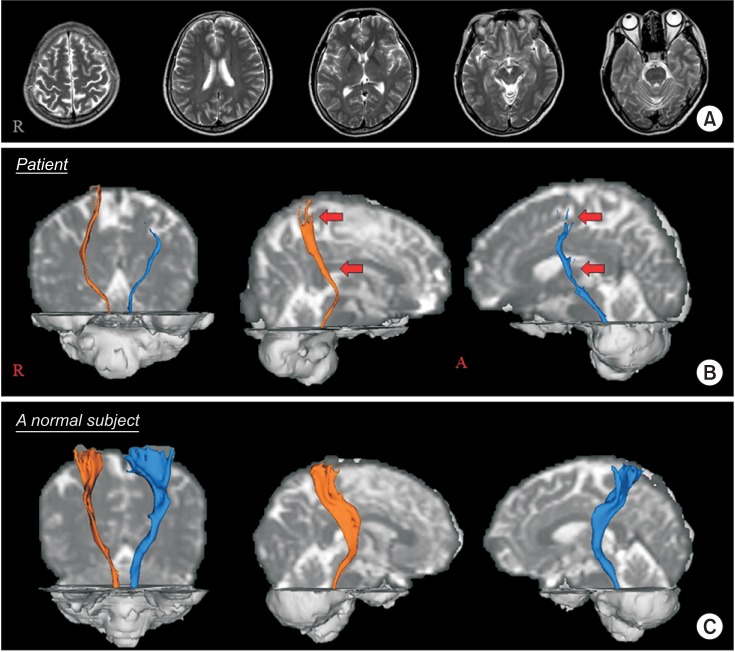Ann Rehabil Med.
2016 Dec;40(6):1149-1150. 10.5535/arm.2016.40.6.1149.
Central Pain Due to Spinothalamic Tract Injury by Head Trauma Caused by Falling Object
- Affiliations
-
- 1Department of Physical Medicine and Rehabilitation, Yeungnam University College of Medicine, Daegu, Korea. yousung1008@hanmail.net
- KMID: 2371351
- DOI: http://doi.org/10.5535/arm.2016.40.6.1149
Abstract
- No abstract available.
Figure
Cited by 1 articles
-
Central Pain Due to Traumatic Axonal Injury of the Spinothalamic Tract in Patients with Mild Traumatic Brain Injury
Sung Ho Jang, Young Hyeon Kwon
Brain Neurorehabil. 2018;11(1):. doi: 10.12786/bn.2018.11.e7.
Reference
-
1. Kim JH, Ahn SH, Cho YW, Kim SH, Jang SH. The relation between injury of the spinothalamocortical tract and central pain in chronic patients with mild traumatic brain injury. J Head Trauma Rehabil. 2015; 30:E40–E46.
Article2. Alexander MP. Mild traumatic brain injury: pathophysiology, natural history, and clinical management. Neurology. 1995; 45:1253–1260. PMID: 7617178.
Article3. Povlishock JT, Christman CW. The pathobiology of traumatically induced axonal injury in animals and humans: a review of current thoughts. J Neurotrauma. 1995; 12:555–564. PMID: 8683606.
Article4. Buki A, Povlishock JT. All roads lead to disconnection? Traumatic axonal injury revisited. Acta Neurochir (Wien). 2006; 148:181–194. PMID: 16362181.
- Full Text Links
- Actions
-
Cited
- CITED
-
- Close
- Share
- Similar articles
-
- Central Pain Due to Traumatic Axonal Injury of the Spinothalamic Tract in Patients with Mild Traumatic Brain Injury
- Conservative treatment of corpus callosum hemorrhage due to a falling coconut in Indonesia: a case report
- Restricted Spinothalamic Sensory Loss Below Thoracic Dermatomal Level Caused by Pontine Infarction
- An Analysis of Cranio-spinal Fracture in Case of Free-falling Trauma
- Difference in Injury of the Corticospinal Tract and Spinothalamic Tract in Patients with Putaminal Hemorrhage


